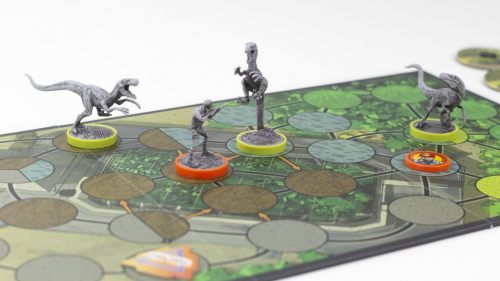Board Game Review: AZUL
I love games with dark, usually violent, themes. Games with beautiful, complicated graphic art styles. Mini figures. Special powers that make me feel like a total badass. Complicated rulebooks that take days to learn.
Azul has none of these things, and I love it too.
You’ve probably seen Azul out there in the wild. It doesn’t have the beautiful, complicated graphic art style I noted above, but it is striking and always jumps out at me among a wall of other games. Aside from that, there is an obvious reason it has become so ubiquitous: it’s nearly perfect. Almost to the point of making it uninteresting, this is a no-brainer game purchase. Easy to play, hard to master, and welcoming to all.
Azul is a tile placement game. I don’t know if this is really a type of game; I just made it up. You do place a shitload of tiles though. Each player gets a board. On top is your scoring track. On the left you have empty rows (to be filled with square tiles of the same color). On the right you have a five-by-five grid which is where you permanently place tiles once you fill up a row on the left.

The placement of these permanent tiles is of paramount importance. Azul is a game won by points tallied at the end of a round, and tile placement can lead to very beneficial bonus points depending on how you place them. So while you’re filling rows on the left, you need to be very mindful of the bigger picture you’re gunning for.
You also need to be aware of your opponents’ progress. Each round of Azul begins with a circle of disks in the middle of the table, each with four random-colored tiles. One by one, players take turns choosing which tiles they want to bring to their board. They can only choose from one circle, and they can only take one color to fill their rows. Whatever tiles you don’t take get shoved into the middle. You can take from that increasingly attractive pile, but the first player who does has to also accept a negative point marker. However, after a few turns, you’re more likely to have multiples of colors in there so it could be worth it.
On the other hand, maybe you take a color just to screw over an opponent. If you take tiles you can’t use back to your player mat, they cause you more negative points. It’s not too hard to stick an opponent with a situation where he or she must take tiles they cannot use. You might give up some possible points, but the hurt you put on someone else could easily be worth it.

I tend to think of Azul in terms of a one-to-one game because that’s how I play it most often. But it can support up to four players. Honestly, it’s great any way you can get it, but because my mind for strategy is limited (I am stupid), I appreciate concentrating all my Azul energies onto one opponent instead of three. Folks who are smarter than me can probably juggle opponents no problem.
In any case, you’ll probably adore the simplicity Azul offers. Each player gets their cool own mini-board that takes the place of a huge, complicated game board. There are disks, tiles, point markers… and that’s about it. You can find more barebones games out there, but Azul is also on a slightly higher tier than a small card game. It’s also quite tactile. While there are no warrior mini figures or anything like that, the tiles themselves are quite nice to hold onto, plus I adore blindly grabbing them out of the cloth sack that comes with the game.
Any way you slice it, Azul is a winner. Like another low-key favorite of mine, Jaipur, it offers a perfect way to pass the time, while not also filling up your whole night. In fact, it’s a very good warm up game, something to get everyone’s minds firing before moving on to something more complicated if you’re dedicating a whole evening to games.



